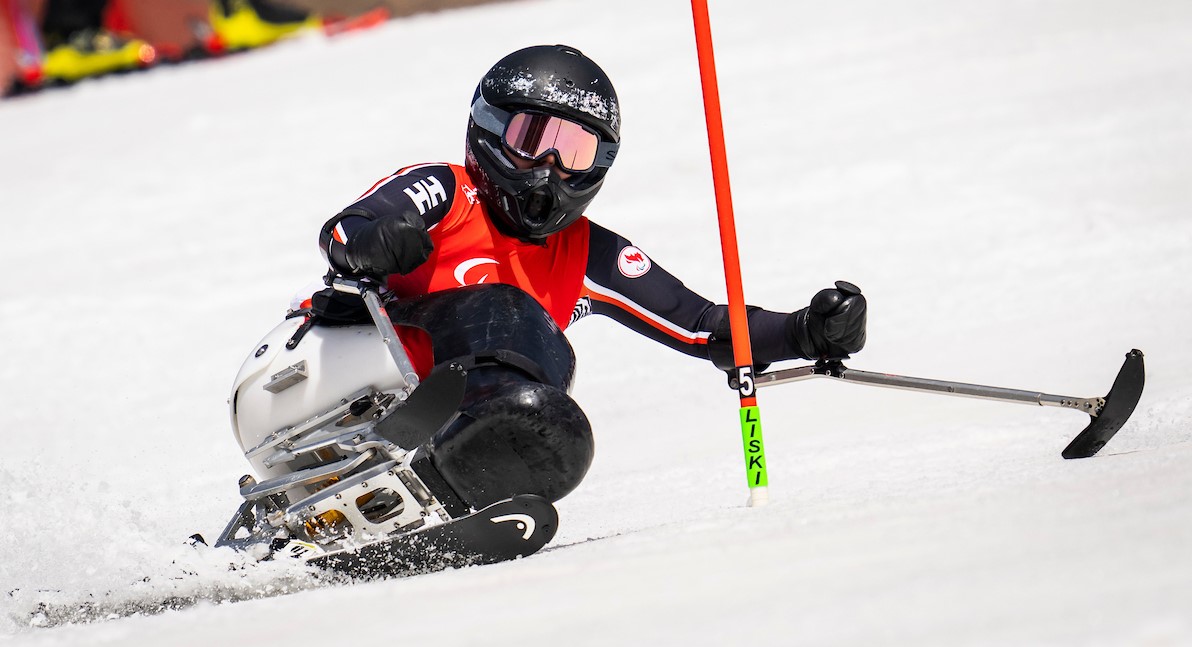All about Para alpine skiing: An original Paralympic Winter Games sport
Get ready for Milano Cortina 2026 with a primer on Canada’s most successful sport at the Games

One of the original Paralympic Winter Games sports, Para alpine skiing has featured in every edition of the Games since 1976.
Canada has been a top performer in the sport, with stars like Lana Spreeman, Lauren Woolstencroft, Karolina Wisniewska, and Mac Marcoux among those who have taken their spot on the podium over the years.
With less than six months to go until the Milano Cortina 2026 Paralympic Winter Games, get ready to cheer on the Canadian Paralympic Team by learning all about Para alpine skiing, below.
PARALYMPIC ORIGINS
Originating after the Second World War as a rehabilitation activity for veterans, Para alpine skiing is currently practiced in more than 40 countries. It continues to grow in popularity with the Beijing 2022 Paralympic Winter Games featuring 170 athletes from 37 countries, contesting 30 medal events.
The first events were slalom and giant slalom for standing skiers at the first two Paralympic Winter Games in 1976 and 1980.
The downhill event was added in 1984 and the super-G in 1994. Sit skiing and skiing for visually impaired athletes were official categories in the sport for the first time in 1998.
By 2002, there were 14 different classification categories, including the LW6/8 for single arm amputees to the LW12 in sit skiing for athletes with double leg amputations. That was all reduced for 2006 to three categories – standing, sitting, and visually impaired – with a results calculation system called factored timing that allows athletes with different impairments to compete against each other.
The alpine combined was added for Vancouver 2010, and since then five Para alpine skiing events are contested at the Games.
CLASSIFICATION PRIMER
Para alpine skiing offers three competition categories for both men and women.
Standing: Skiers race upright on equipment adapted to their needs. For example, athletes like Canada’s Frédérique Turgeon race on one ski or Alexis Guimond uses one pole due to cerebral palsy which affects his left side.
Sitting: Skiers race in a sit ski – a mono-ski with a specially fitted chair attached to the single ski. The skiers also use outrigger poles to aid in balance.
Visually impaired: Skiers with a vision impairment are guided through the course by sighted guides using verbal signals to indicate the course to follow.
EVENTS
There are five disciplines in Para alpine skiing: downhill, super-G, slalom, giant slalom and alpine combined.
Downhill and super-G are considered speed events and racers do one run of the course. Slalom and giant slalom are the technical disciplines, requiring more turns and change of directions around gates. Athletes will complete two runs for these, with the times added together to determine the winner.
Alpine combined sees racers compete in two runs on the same day, both a speed and technical race, with the combined fastest times deciding the finish order.
CANADA’S HISTORY IN THE SPORT
Canada has won 115 medals in Para alpine skiing and has been represented in the sport at every Games since the first edition in 1976 – including at least one gold medal at every Games.
At the first Paralympic Games in 1976 in Örnsköldsvik, Sweden, John Gow was Canada’s first Paralympic champion in Para alpine skiing with a victory in the men’s IV A slalom. Gow, injured in a plane crash in 1969, never competed at another Games. He later pursued a successful career in the ski resort industry and tourism before his passing in October 2024.
Over the decades, Canada steadily built its reputation in the sport.
Some of the nation’s greatest moments in Para alpine skiing were no doubt on home snow, on the ski hills of Whistler at the Vancouver 2010 Games.
Lauren Woolstencroft became the first Canadian winter Paralympian to win five gold medals at a single Games, bringing her career total to 10 across three Paralympic appearances. She was also the first Para alpine skier of any country to accomplish the feat. Her life was celebrated in Toyota’s “Good Odds” commercial in 2018, which premiered during the Super Bowl ahead of the upcoming Games in PyeongChang.
At those same 2010 Games, Viviane Forest also marched to the podium five times with a gold, three silver, and a bronze in her only Winter Games appearance. She also helped Canada to two gold medals in goalball at the summer Games in 2000 and 2004.
The late Lana Spreeman is the Canadian Para alpine skier with the most Winter Games appearances and medals. She competed at five Games (1980, 1984, 1988, 1992, 1994) and earned at least one medal at each colour for a career total of 13 – one gold, six silver, and six bronze.
Today, Canada continues to be a solid multi-medal contender in Para alpine skiing with veterans such as Mollie Jepsen, Kurt Oatway, and Alexis Guimond leading the charge.
At the most recent Beijing 2022 Games, Canada captured six medals (one gold, two silver, and three bronze).
LOOKING AHEAD AT MILANO CORTINA
At the Milano Cortina 2026 Paralympic Winter Games, Para alpine skiing will be contested at the Tofane Alpine Skiing Centre in Cortina d’Ampezzo, located in the beautiful Dolomite mountains.
The current schedule will see the downhill kicking off competition on March 7, followed by the super-G on March 9, alpine combined on March 10, giant slalom on March 12 (women) and March 13 (men), and slalom on March 14 (women) and March 15 (men).
"*" indicates required fields
"*" indicates required fields